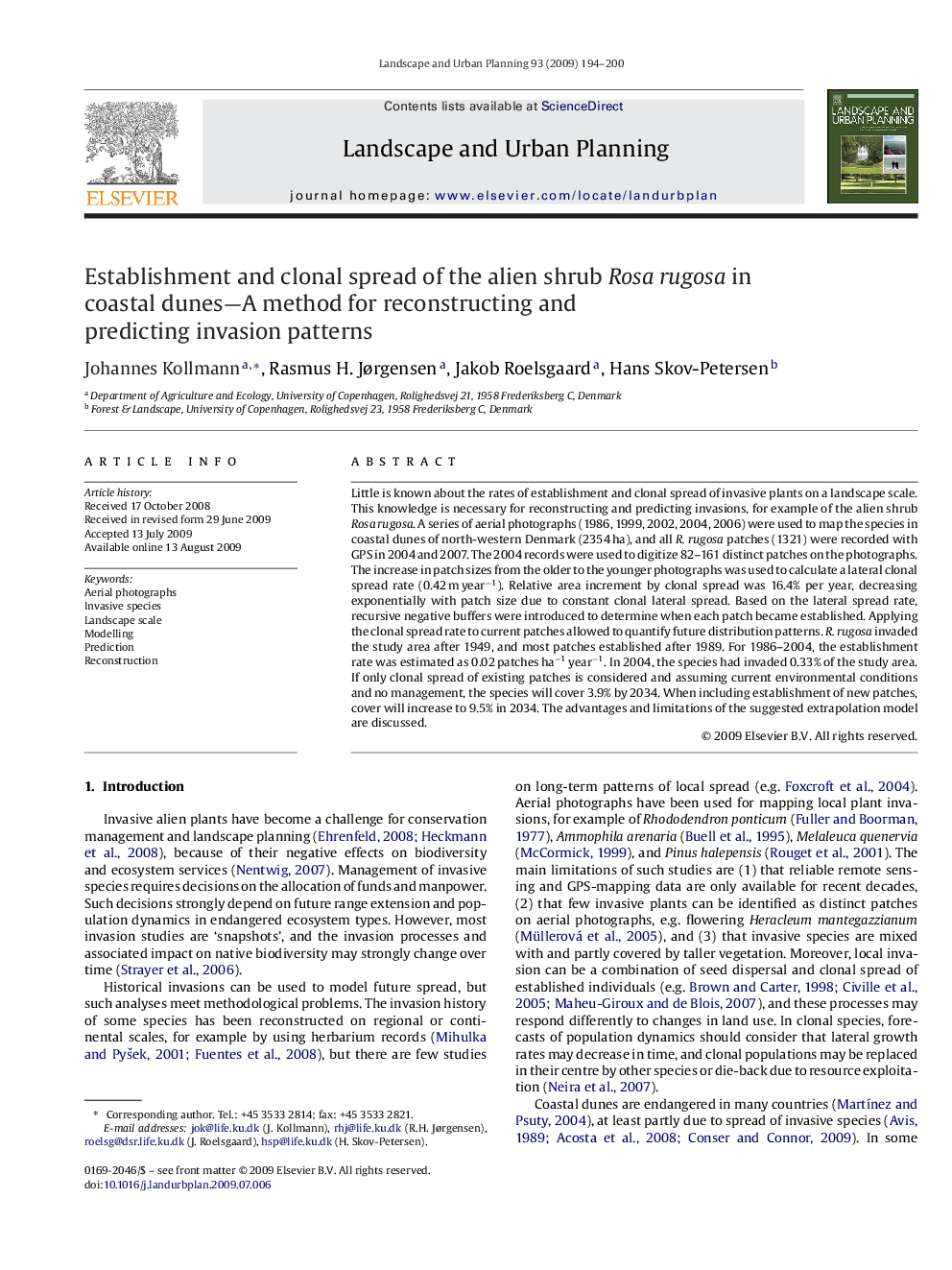| Article ID | Journal | Published Year | Pages | File Type |
|---|---|---|---|---|
| 1050127 | Landscape and Urban Planning | 2009 | 7 Pages |
Little is known about the rates of establishment and clonal spread of invasive plants on a landscape scale. This knowledge is necessary for reconstructing and predicting invasions, for example of the alien shrub Rosa rugosa. A series of aerial photographs (1986, 1999, 2002, 2004, 2006) were used to map the species in coastal dunes of north-western Denmark (2354 ha), and all R. rugosa patches (1321) were recorded with GPS in 2004 and 2007. The 2004 records were used to digitize 82–161 distinct patches on the photographs. The increase in patch sizes from the older to the younger photographs was used to calculate a lateral clonal spread rate (0.42 m year−1). Relative area increment by clonal spread was 16.4% per year, decreasing exponentially with patch size due to constant clonal lateral spread. Based on the lateral spread rate, recursive negative buffers were introduced to determine when each patch became established. Applying the clonal spread rate to current patches allowed to quantify future distribution patterns. R. rugosa invaded the study area after 1949, and most patches established after 1989. For 1986–2004, the establishment rate was estimated as 0.02 patches ha−1 year−1. In 2004, the species had invaded 0.33% of the study area. If only clonal spread of existing patches is considered and assuming current environmental conditions and no management, the species will cover 3.9% by 2034. When including establishment of new patches, cover will increase to 9.5% in 2034. The advantages and limitations of the suggested extrapolation model are discussed.
